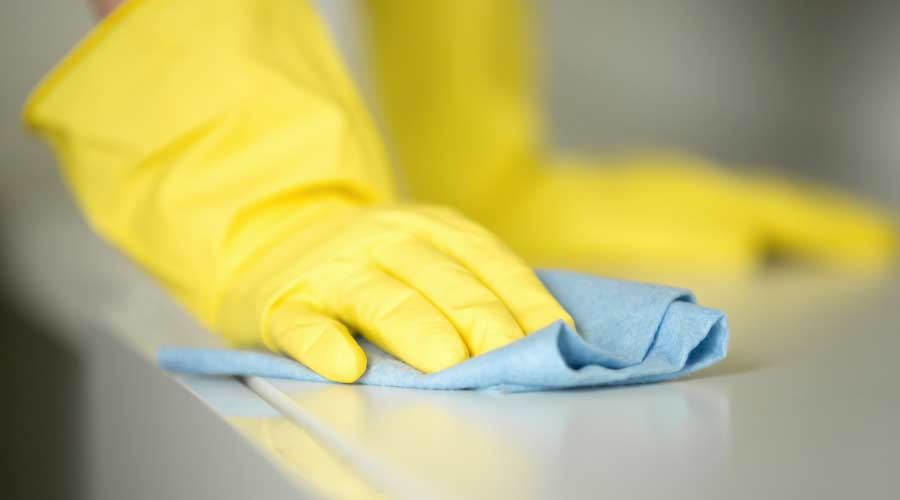
The CleanLink Summit: Gaining a Competitive Edge in Cleaning is just under two weeks away — an event that will provide nearly five hours of expertise on top trends in the commercial cleaning industry for facility managers, executive housekeepers, distributors, and building service contractors (BSCs). Taking place March 23 from 8 a.m. - 12:30 p.m. EDT at the Baltimore Convention Center, presentations of note include employee recruitment and retention, infection control protocols, sustainability, and new technologies and digital innovations.
The infection control protocols segment will include expertise from John LaRochelle, CEO of Environmental Infection Prevention. Ahead of the presentation, which will cover infection control myths, strategies for different facilities, and how to assess responses to current disinfecting challenges, we reached out to LaRochelle for a Q&A — giving attendees an idea of what to expect:
CleanLink: Cleaning professionals understand bacteria/germs/etc., but most building occupants don't. What advice do you have for executives overseeing cleaning when it comes to balancing proper infection prevention strategies and satisfying (sometimes excessive) requests from facility customers?
The challenge we face in the cleaning industry is that both the worker and building occupant cannot see the germs/pathogens present on surfaces or within the air. Many cleaning professionals do not have the proper amounts of labor, supplies, protocols and a measurement process to identify and eliminate germs/pathogens.
In multiple studies it shows that cleaners visually clean and only effectively wipe 49 percent of surfaces (if a surface looks clean then they many times move on).
As an end user, we visually evaluate if the space is clean (if it looks clean than they believe it is safe). The challenge is, if we can’t see germs/pathogens, how do we know if our cleaning program is working? Particular standards to consider are.
• How are you evaluating that the cleaners are disinfecting surfaces and air?
• How do you determine if the cleaner wiped or applied disinfectants properly?
• Are the surfaces biologically clean?
• How do you determine what products, equipment and processes are best for your building?
• Does your facility meet EPA guidelines for Indoor Air Quality?
• How do you measure Indoor Air Quality?
CleanLink: How has COVID changed the way people think about infection prevention and what it means to have a healthy facility?
• COVID has brought much needed attention to the cleaning industry. All aspects of cleaning have received much needed attention. We have finally started to invest in the people, process and technology related to cleaning and disinfection of surfaces and the air.
• Science has show us that not all cleaning products and process are effective. In some studies, it has shown that cleaning can make the problem worst unless the proper labor, supplies and process are followed. As an example, many disinfectants can be neutralized by the wipe or mop you are using, resulting in the disinfectant not working as intended.
CleanLink: What are some of the best ways for cleaning professionals to promote new or improved cleaning efforts around a facility to further reassure occupants?
Educate everyone that they all have a role in creating a safe environment. Many times, the cleaner only performs cleaning once per day. It is critical that everyone share in the responsibility to create a safer environment.
CleanLink: Is there anything pressing in the industry you plan to address in your presentation at the summit?
• We need to follow the science and measure what we manage.
• Indoor air quality is a problem area that can contributed to illnesses or infections.
• Studies show that floors contribute to the spread of germs/pathogens
Registration for the summit is still open! Click here to sign up and check out the entire agenda.

 The Down and Dirty on Cleaning in Virus Season
The Down and Dirty on Cleaning in Virus Season How Surfactant Use is Expanding in Commercial Cleaning
How Surfactant Use is Expanding in Commercial Cleaning